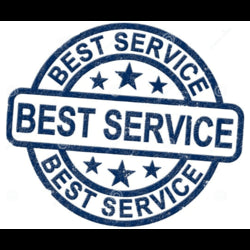Creating a well-organized and safe shed transforms your outdoor storage from a cluttered liability into a productive asset that enhances your property value and daily efficiency. Whether you're storing garden tools, workshop equipment, or seasonal items, implementing proper shed safety tips and protocols ensures your investment serves you well for decades to come.
A thoughtfully organized shed with comprehensive safety measures doesn't just protect your belongings, it safeguards your family while maximizing the utility of every square foot. From structural integrity and fire prevention to efficient storage systems and security measures, this expert guide covers everything you need to know about creating the ultimate functional outdoor storage space.

The Foundation of Shed Safety Tips
Effective shed safety tips begin with understanding that these two elements work hand in hand. A disorganized shed creates safety hazards through cluttered walkways, unstable storage, and difficulty accessing emergency equipment. Conversely, safety measures that interfere with the organization reduce the shed's functionality and likelihood of maintaining order over time.
Why Shed Safety Tips Matter?
Property Protection: Well-organized storage with proper safety measures protects thousands of dollars' worth of tools, equipment, and supplies from damage, theft, and deterioration.
Family Safety: Proper organization eliminates trip hazards, falling objects, and difficult-to-reach emergency equipment, while safety protocols prevent accidents involving power tools, chemicals, and structural failures.
Time Efficiency: Organized systems with clear safety protocols reduce time spent searching for items, prevent frustration-induced accidents, and streamline maintenance routines.
Insurance Benefits: Many insurance providers offer premium reductions for properties with well-maintained, secure storage structures that demonstrate proper risk management.
Legal Compliance: Proper storage of hazardous materials, fire safety equipment, and structural maintenance ensures compliance with local building codes and homeowner association requirements.
Structural Safety: The Foundation of Shed Safety Tips
Before implementing any organizational system, ensure your shed's structural integrity provides the safe foundation necessary for long-term use. A structurally sound shed protects both stored items and anyone working inside while providing stable mounting points for organization systems.
Essential Structural Inspections for shed safety tips
Foundation Assessment: Examine your shed's foundation for signs of settling, cracking, or moisture intrusion. A level, stable foundation prevents storage systems from shifting and protects valuable items from ground moisture. Look for gaps between the shed and foundation, evidence of pest intrusion, or areas where water might collect.
Roof System Evaluation: Your shed's roof protects everything inside, making regular inspection critical for both safety and organization. Check for loose, damaged, or missing shingles, signs of leaks or water damage, and proper drainage from gutters and downspouts. A compromised roof can destroy organized storage systems and create dangerous structural conditions.
Wall and Door Integrity: Inspect walls for warping, cracking, or pest damage that could compromise security and structural stability. Ensure doors hang properly, lock securely, and seal effectively against weather. Damaged walls or doors create security vulnerabilities and can't support organizational systems reliably.
Window and Ventilation Systems: Proper ventilation prevents moisture buildup that can damage both the structure and stored items while reducing the risk of mold and mildew. Check that windows open and close properly, screens are intact, and ventilation systems function effectively.
Professional vs. DIY Structural Repairs
Minor maintenance like caulking, paint touch-ups, and simple hardware replacement can typically be handled by homeowners. However, significant structural issues, including foundation problems, major roof damage, or extensive pest damage, require professional assessment and repair to ensure safety and maintain warranty protection.
Fire Safety Integration in Shed Safety Tips Plans
Fire safety represents one of the most critical aspects of shed safety tips, requiring careful planning for both prevention and response. Proper integration of fire safety measures with organizational systems creates a safer environment without sacrificing functionality.
Fire Prevention Through Smart Shed Safety Tips
Flammable Material Storage: Implement dedicated storage areas for flammable materials, including gasoline, paint, solvents, and cleaning supplies. Use approved containers with proper labeling, store materials away from ignition sources, and maintain minimum distances from electrical equipment. Consider using dedicated fire-resistant cabinets for hazardous materials.
Electrical Safety Protocols: Ensure all electrical installations meet local codes and include proper grounding, circuit protection, and weatherproof fixtures. Keep electrical panels accessible, use only appropriate extension cords, and regularly inspect for damage or wear. Never overload circuits or use damaged electrical equipment.
Heat Source Management: Position heat-generating equipment like space heaters, battery chargers, and power tools away from combustible materials. Provide adequate clearance around equipment, ensure proper ventilation, and never leave heat-generating equipment unattended.
Static Electricity Prevention: Use anti-static measures when handling flammable materials, ground metal containers during fuel transfers, and avoid synthetic clothing when working with volatile substances.
Emergency Response Equipment for shed safety tips
Fire Extinguishers: Install appropriate fire extinguishers rated for the materials stored in your shed. Class ABC extinguishers handle most common fires, while Class B extinguishers are essential where flammable liquids are stored. Mount extinguishers in easily accessible locations and train family members on proper use.
Smoke Detection: Consider installing battery-powered smoke detectors in larger sheds or those with electrical systems. Test batteries regularly and replace units according to manufacturer recommendations.
Emergency Communication: Ensure cell phone coverage in your shed area or consider installing a landline for emergency communication. Keep emergency contact numbers posted in visible locations.
First Aid Supplies: Maintain a well-stocked first aid kit appropriate for the types of work performed in your shed. Include supplies for cuts, burns, eye injuries, and other common workshop accidents.
Advanced Organization Systems for shed safety tips
Creating efficient organization systems requires understanding how different storage methods impact both accessibility and safety. The best systems maximize space utilization while maintaining clear pathways and easy access to emergency equipment.
Vertical Storage Solutions for shed safety tips
Wall-Mounted Systems: Utilize wall space with pegboards, slat walls, and dedicated tool hangers that keep items visible and accessible while freeing floor space for movement. Mount systems securely to wall studs and distribute weight evenly to prevent failure.
Overhead Storage: Install ceiling-mounted storage for seasonal items and lightweight equipment that's accessed infrequently. Use sturdy mounting systems rated for the intended load and ensure stored items are secure against shifting or falling.
Tall Shelving Units: Implement vertical shelving systems that make efficient use of height while maintaining stability. Anchor tall units to walls, store heavier items on lower shelves, and use safety restraints to prevent items from falling.
Zone-Based Organization for shed safety tips
Garden Zone: Dedicate specific areas for gardening tools, supplies, and equipment. Include storage for hand tools, hoses, fertilizers, and seasonal equipment like lawn mowers and trimmers. Organize by frequency of use and seasonal needs.
Workshop Zone: Create designated areas for power tools, hardware, and project materials. Include workbench space, tool storage, and safety equipment specific to workshop activities. Ensure adequate lighting and electrical access.
Seasonal Zone: Allocate space for items used seasonally, such as holiday decorations, winter equipment, or summer recreation gear. Use clearly labeled containers and easy-access storage for items used predictably.
Hazardous Material Zone: Establish secure, well-ventilated areas for flammable, toxic, or otherwise dangerous materials. Use appropriate containers, implement security measures, and maintain proper separation from other storage areas.
Security Measures in Shed Safety Tips
Protecting your organized storage investment requires implementing security measures that deter theft while maintaining convenient access for legitimate users. Modern security options range from basic hardware improvements to sophisticated monitoring systems.
Physical Security for shed safety tips
Locking Systems: Upgrade to high-quality locks that resist common bypass methods. Consider keyed-alike systems for convenience, smart locks for access logging, or combination locks to eliminate key management. Secure not just doors but also windows and ventilation openings.
Reinforcement Hardware: Strengthen door frames, hinges, and strike plates to resist forced entry. Use security screws, reinforce weak points, and consider adding security bars for windows. Quality hardware deters opportunistic theft and provides time for security response.
Visibility and Lighting: Implement motion-activated lighting and maintain clear sight lines to your shed from the main buildings. Well-lit areas deter criminal activity and improve safety for legitimate users accessing the shed after dark.
Anchor Systems: Secure valuable equipment to the shed structure or floor using chains, cables, or dedicated anchor points. This prevents theft of smaller valuable items and makes larger equipment more difficult to remove.
Technology Integration for shed safety tips
Security Cameras: Modern wireless cameras provide remote monitoring, motion detection, and smartphone alerts at reasonable costs. Solar-powered options eliminate the need for electrical connections while providing reliable monitoring.
Alarm Systems: Consider wireless alarm systems that integrate with home security systems or provide independent monitoring. Options include door/window sensors, motion detectors, and glass break sensors.
Smart Access Control: Electronic locks with smartphone control provide access logging, temporary access codes, and remote monitoring capabilities. These systems integrate well with other smart home technology and provide detailed security information.
Environmental Controls for shed safety tips
Controlling temperature, humidity, and air quality protects both stored items and people while supporting effective organization systems. Environmental controls become particularly important for sensitive storage items and workshop activities.
Climate Control for shed safety tips
Ventilation Systems: Implement passive or active ventilation to control humidity, prevent condensation, and eliminate harmful vapors. Ridge vents, soffit vents, and exhaust fans work together to maintain healthy air quality and protect stored materials.
Insulation Considerations: Proper insulation moderates temperature swings, reduces condensation, and protects temperature-sensitive stored items. Consider both thermal and moisture barriers appropriate for your climate and shed construction.
Humidity Management: Use dehumidifiers in enclosed spaces, provide adequate air circulation, and implement moisture barriers to protect metal tools, paper documents, and other moisture-sensitive materials.
Temperature Monitoring: Install thermometers and humidity gauges to track environmental conditions. Digital units with data logging help identify patterns and potential problems before damage occurs.
Pest Control in the Shed: Safety Tips
Exclusion Methods: Seal gaps, cracks, and openings that provide pest entry points. Use appropriate materials for different pest types and maintain exclusion barriers as part of regular maintenance.
Storage Methods: Use sealed containers for attractive materials like pet food, bird seed, and paper products. Elevate storage off the floor and away from walls where possible to reduce pest harborage areas.
Monitoring and Treatment: Implement pest monitoring through traps and regular inspections. Address pest problems early with appropriate treatments while minimizing exposure to toxic substances.
Maintenance Schedules for shed safety tips
Regular maintenance preserves both organizational systems and safety measures while extending the life of your shed and its contents. Systematic maintenance schedules prevent small problems from becoming expensive repairs or safety hazards.
Daily and Weekly Maintenance for shed safety tips
Quick Organization Checks: Spend a few minutes returning items to designated locations, securing loose materials, and checking for obvious hazards. Regular attention prevents the accumulation of disorder and maintains safety protocols.
Safety Equipment Verification: Quickly verify that fire extinguishers, first aid supplies, and emergency equipment remain accessible and functional. Check that safety signage remains visible and emergency exits stay clear.
Security Confirmation: Ensure locking systems function properly, lighting operates correctly, and security equipment remains operational. Address minor security issues immediately to prevent escalation.
Monthly and Seasonal Maintenance for shed safety tips
Deep Organization Review: Assess organization systems for effectiveness, relocate items as needed, and identify improvements. Regular review prevents systems from degrading and identifies optimization opportunities.
Comprehensive Safety Inspections: Examine structural elements, electrical systems, fire safety equipment, and environmental controls. Document findings and schedule repairs or replacements as needed.
System Updates: Update inventory lists, review security codes, test backup systems, and refresh emergency supplies. Regular updates ensure systems remain current and effective.
Choosing Professional Shed Solutions for Organization and Safety
While many aspects of shed safety tips can be implemented by homeowners, starting with a quality foundation makes everything easier and more effective. Professional shed solutions provide engineered safety features and organization-friendly designs that support long-term success.
Engineered Safety Features in Professional Sheds
Structural Integrity: Professional sheds like those from Duramax incorporate engineered design elements that provide superior strength, stability, and longevity. Steel construction offers fire resistance, pest resistance, and structural reliability that supports heavy organizational systems safely.
Ventilation Systems: Professionally designed ventilation systems ensure adequate air circulation for safety and material protection. Ridge vents, soffit systems, and planned air flow prevent the moisture and vapor problems that compromise both safety and organization.
Electrical Integration: Professional sheds can include pre-planned electrical systems with proper grounding, weatherproof fixtures, and adequate capacity for power tools and lighting. This eliminates the safety hazards associated with makeshift electrical installations.
Organization-Friendly Design Elements
Wall Systems: Metal sheds provide strong, flat surfaces ideal for mounting organization systems. Pre-planned mounting points and reinforcement areas support heavy storage systems without compromising structural integrity.
Floor Systems: Professional shed floors provide level, stable surfaces that support shelving systems, workbenches, and heavy equipment. Proper elevation and moisture barriers protect stored items and maintain the organization system's integrity.
Door and Window Placement: Thoughtful design places doors and windows to maximize natural light and organizational efficiency while maintaining security and weather protection.
Cost-Effective Strategies for Shed Safety Tips
Implementing effective shed safety tips doesn't require an enormous investment when approached systematically. Smart planning and phased implementation allow you to build comprehensive systems over time while maintaining budget control.
Budget-Friendly Organization Solutions
DIY Storage Systems: Many effective organization solutions can be built using common materials and basic tools. Pegboards, simple shelving, and basic container storage provide excellent functionality at minimal cost.
Repurposed Materials: Clean containers, retired furniture, and salvaged building materials can provide effective storage solutions with minimal investment. Ensure repurposed materials meet safety standards and suit intended uses.
Modular Systems: Start with basic organization systems and expand over time. Modular approaches allow you to spread costs while building increasingly sophisticated systems.
Safety Investment Priorities
Essential Safety Equipment: Prioritize fire extinguishers, basic first aid supplies, and essential safety equipment before investing in convenience features. Core safety equipment provides protection regardless of an organization's sophistication.
Structural Maintenance: Address structural issues promptly to prevent expensive repairs and maintain safety. Preventive maintenance costs far less than emergency repairs or replacement.
Quality Security Hardware: Invest in quality locks, reinforcement hardware, and basic security measures before considering high-tech solutions. Good basic security provides substantial protection at a reasonable cost.
Maximizing Your Shed Investment Through Professional Solutions
When considering shed safety tips improvements, the foundation quality significantly impacts long-term success and satisfaction. Professional shed solutions provide the engineering, materials, and design features that make organization and safety systems work effectively over time.
Why Duramax Sheds Excel for Organization and Safety
Superior Construction: Duramax insulated building options provide climate-controlled environments that protect sensitive tools and materials while supporting year-round organization activities. Steel construction offers fire resistance and structural strength that wooden sheds cannot match.
Engineered Ventilation: Professional ventilation systems prevent the moisture and vapor problems that destroy organizational systems and create safety hazards. Engineered air flow protects both stored materials and people working in the shed.
Organization-Ready Design: Duramax sheds incorporate features like strong wall systems for mounting organization equipment, level floors for stability, and adequate lighting for safety and productivity.
Value Beyond Initial Cost
Longevity: Professional construction provides decades of reliable service, protecting your organization and safety investments over time. Quality materials and construction methods resist deterioration that compromises cheaper alternatives.
Resale Value: Well-designed storage buildings enhance property values significantly more than basic sheds. Professional installation and quality construction provide lasting value that benefits property resale.
Insurance Benefits: Quality construction and professional installation may qualify for insurance discounts while reducing liability exposure from accidents or weather damage.
Professional Installation and Support
Proper Foundation: Professional installation ensures proper foundations that support organizational systems and provide moisture protection. Proper preparation prevents problems that compromise safety and organizational effectiveness.
Warranty Protection: Professional installation activates comprehensive warranty protection that guards against defects and installation problems. This protection preserves your investment and provides peace of mind.
Ongoing Support: Professional shed companies provide ongoing support for maintenance, upgrades, and problem resolution. This support helps maintain organizational and safety systems over time.
Frequently Asked Questions About Shed Safety Tips
How often should I reorganize my shed for optimal safety?
For optimal shed safety tips, conduct major reorganization reviews twice yearly—spring and fall—to align with seasonal tool and equipment changes. Monthly quick organization sessions help maintain systems by returning displaced items to designated locations and removing accumulated clutter. Weekly safety checks ensure fire extinguishers remain accessible, emergency exits stay clear, and hazardous materials are properly secured. The key is consistent attention rather than perfect systems; small, regular efforts prevent major disorganization that creates safety hazards and reduces efficiency.
What are the most important safety features for a shed organization?
Essential safety features for effective shed safety tips include adequate lighting to prevent accidents during organizational activities, clear pathways maintained through proper layout planning, and appropriate fire safety equipment positioned for easy access. Install properly rated fire extinguishers, maintain well-stocked first aid supplies, and ensure emergency exits remain unobstructed. Implement proper storage for hazardous materials using approved containers and dedicated areas, and maintain structural integrity through regular inspections and prompt repairs. These foundational safety elements support all organizational activities.
How much should I budget for shed safety tips improvements?
Budget allocation for shed safety tips improvements depends on shed size and current condition, but plan approximately $500-1,500 for comprehensive basic systems, including quality shelving, safety equipment, and security hardware. Priority safety investments like fire extinguishers, first aid supplies, and essential lighting should receive immediate funding of $200-400. Organization systems can be implemented gradually over 6-12 months, spreading costs while building increasingly sophisticated storage solutions. Professional shed upgrades may require larger investments but provide superior long-term value and safety benefits.
Can I install organization systems in any type of shed?
While basic organization systems can be adapted to most sheds, structural limitations affect what's safely possible. Wooden sheds may require reinforcement for heavy wall-mounted systems, while metal sheds typically provide superior mounting strength for organizational equipment. Foundation stability affects floor-standing systems, while roof structure determines overhead storage capacity. Professional assessment helps determine what organizational systems your shed can safely support and what improvements might enhance capabilities while maintaining safety standards.
What's the biggest mistake people make with shed safety tips?
The most common mistake in shed safety tips is prioritizing storage capacity over accessibility and safety protocols. People often fill sheds without maintaining clear pathways, emergency access, or proper ventilation, creating dangerous conditions that compromise both safety and organizational effectiveness. Another critical error is neglecting regular maintenance of both organizational systems and safety equipment, allowing small problems to become major hazards. Successful shed safety tips require balancing maximum storage with maintained accessibility, safety compliance, and systematic maintenance protocols.
Conclusion: Building Your Ideal Storage Solution
Effective shed safety tips create valuable outdoor storage space that serves your family for decades while protecting people, property, and investments. The systematic approach outlined in this guide provides the framework for transforming any shed into a highly functional, safe, and organized asset that enhances your property value and daily efficiency.
Remember that safety tips work together synergistically—proper organization supports safety protocols while safety measures protect your organizational investments. Neither element should be considered optional, as both contribute to the long-term success and value of your storage solution.
The foundation for successful shed safety tips begins with quality construction and thoughtful design. Professional shed solutions provide the structural integrity, engineered features, and organization-friendly design elements that make comprehensive systems work effectively over time.
Ready to transform your storage space? Explore Duramax's complete line of professionally engineered storage buildings designed with organization and safety in mind. With financing options available and comprehensive support, creating your ideal storage solution has never been more achievable.
Take action today: Don't let another season pass with inefficient, unsafe storage. Contact Duramax Sheds Direct to discuss your specific requirements and discover why thousands of customers have chosen professional solutions for their critical storage needs. Your family's safety and your valuable equipment deserve the protection and efficiency that only quality storage solutions can provide.
ALSO READ: 9 Best Duramax Sheds For Your Yard
For even more home improvement tips, read:






